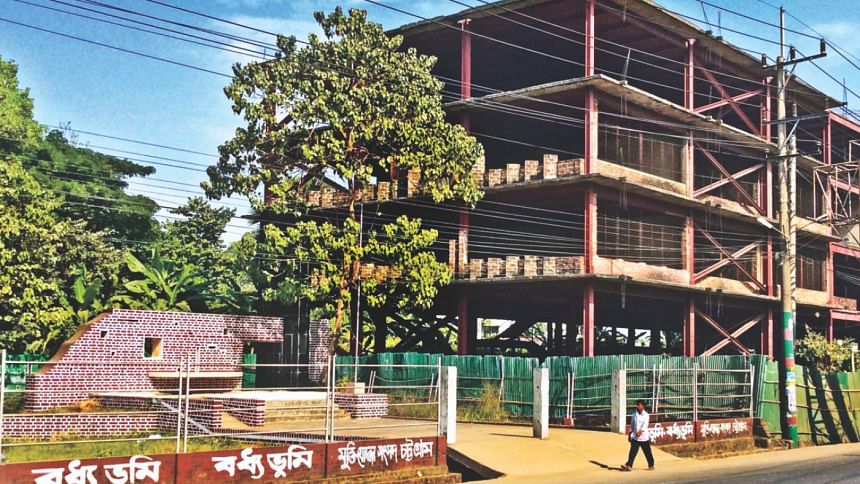Ctg killing fields sliding into oblivion

Dozens of mass killing sites in Chittagong district are left unmarked and being lost gradually due to a lack of government's preservation efforts.
Since the sites are not protected, the young generation cannot see the evidence of the massacres committed by the Pakistani army during the 1971 Liberation War.
The Foy's Lake area in Pahartali was used as the main killing field by the enemy in Chittagong city, and after the war at least 11,000 human skulls were found there.
However, there had been no initiative to preserve the site until 1998, when Chittagong University's Prof Gazi Saleh Uddin, whose father was also killed there, drew the authorities' attention to the issue.
The then prime minister, Sheikh Hasina, ordered to preserve the site, but in 2001 the University of Science and Technology Chittagong (USTC) bought the land of the killing field, measuring 1.75 acres, because it was a private property.
When protests erupted, the university donated 0.10 acres of the total land, where a monument was built to mark the killing site.
In 2012, eight eminent persons, including writer Muhammed Zafar Iqbal and historian Prof Muntassir Mamoon, filed a writ petition with the Supreme Court, and the court ordered the authorities concerned on March 4, 2014 to acquire the land and preserve the whole 1.75 acre area as a mass killing site.
However, the order is still to be implemented.
Prof Saleh Uddin said, "I have visited the Liberation War affairs ministry and the deputy commissioner's office several times to see development but they are blaming bureaucratic complexities for the delay."
A four-storey under-construction building of USTC still stands in most part of the killing field.
Meanwhile, USTC has filed a case over the ownership of the land, and it is yet to be disposed of.
Registrar of USTC Badrul Amin Bhuiyan told The Daily Star, "The construction work remains halted now because the case is under trial."
He declined to say more.
The Pahartali mass killing site is not the only place lacking preservation, there are many more.
In his book, "Pramanno Dalil: Muktijuddhe Chattagram" (Documentary Evidence: Chittagong during Liberation War), published in 2012, Prof Saleh Uddin enlisted 126 killing fields in Chittagong district that include 74 in the port city, 13 in Fatikchhari, eight in Anwara, five each in Mirsarai and Satkania, four each in Boalkhali and Rangunia, three each in Raozan, Sitakunda and Patiya, and two each in Hathazari and Banshkhali upazilas.
He considered every place, where at least one person was killed, as a killing site.
The professor said the government was yet to mark and preserve the killing sites properly.
However, according to a 2010 government survey, there are 67 killing sites in Chittagong district, said Chittagong Deputy Commissioner Mesbah Uddin.
He said the Liberation War affairs ministry would take a countrywide preservation project, but it would take a long time.
"So we have decided to preserve two mass killing sites in every upazila of Chittagong district from upazila and zilla parishad funds. And the work would start this year," he told The Daily Star.
About the Pahartali site preservation, he said, "Although a case was settled in 2014, another case was filed on the issue, and that is still pending. If that is settled, we would acquire the land as soon as possible."
Another mass killing site is in Muzaffarabad in Patiya upazila where at least 300 Hindus were slain on May 3, 1971. A few years ago, a monument was erected in the area to mark the killing field but there is no name of martyrs and description of the murders, said SM Younus, a local.

 For all latest news, follow The Daily Star's Google News channel.
For all latest news, follow The Daily Star's Google News channel. 



Comments